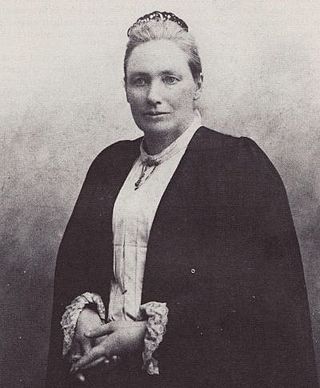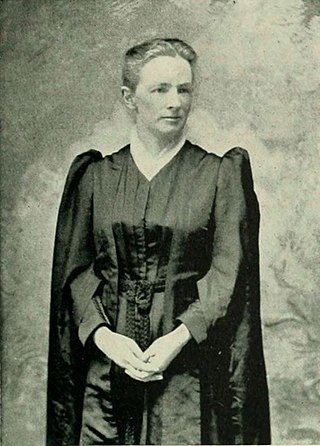
The Universalist Church of West Hartford is a Unitarian Universalist congregation in West Hartford, Connecticut.
The Meadville Lombard Theological School is a Unitarian Universalist seminary in Chicago, Illinois.

United First Parish Church is an American Unitarian Universalist congregation in Quincy, Massachusetts, established as the parish church of Quincy in 1639. The current building was constructed in 1828 by noted Boston stonecutter Abner Joy to designs by Alexander Parris. The building was designated a National Historic Landmark on December 30, 1970, for its association with the Adams family, who funded its construction and whose most significant members are interred here.
Starr King School for the Ministry is a Unitarian Universalist seminary in Oakland, California. The seminary was formed in 1904 to educate leaders for the growing number of progressive religious communities in the western part of the US. The school emphasizes the practical skills of religious leadership. Today, it educates Unitarian Universalist ministers, religious educators, and spiritual activists, as well as progressive religious leaders from a variety of traditions, including Christianity, Islam, Judaism, Buddhism, earth-centered traditions, and others.
The Universalist Unitarian Church of Joliet (UUCJ) is a Unitarian Universalist church, and is home to one of the oldest congregations in Joliet, Illinois.

The Young People's Christian Union (Y.P.C.U.), organized in 1889, was a Universalist youth group created to develop the spiritual life of young people and advance the work of the Universalist church. Soon after it was founded, the Y.P.C.U. focused its attention on missionary work. It was instrumental in the founding of new southern churches and the creation of a Post Office Mission for the distribution of religious literature.

Augusta Jane Chapin was an American Universalist minister, educator and activist for women's rights. She was born in Lakeville, New York, the eldest of eleven children, to Almon Morris Chapin and Jane Pease. She was one of only a few women's speakers at the Parliament of the World's Religions that took place at the Columbian Exposition in Chicago in 1893. She had a long preaching and teaching career around the Midwest, Pennsylvania, New York, Oregon, and California.
Ralph Wendell Burhoe was an important twentieth-century pioneer interpreter of the importance of religion for a scientific and technological world. He was awarded the Templeton Prize in 1980.

The Third Unitarian Church (TUC) is a Unitarian Universalist church in the West Side of Chicago, Illinois, United States. It was founded in November 1868. Because of its pioneering architecture for its day, it has become much of a landmark in Chicago, and is now an official landmark. The church is liberal and describes itself as "a progressive, welcoming, and diverse congregation".

The Unitarian Universalist Church of Medford and The Osgood House are a historic Unitarian Universalist church building and parsonage house at 141 and 147 High Street in Medford, Massachusetts.

The United Unitarian and Universalist Church in Mukwonago, Wisconsin is a Victorian Gothic-styled church and meeting hall built in 1878 - the only Yankee-built church remaining in the town. In 1987 it was added to the National Register of Historic Places for its significance in architecture and social history.
Von Ogden Vogt was a Unitarian minister. His theory of worship influenced the shape of mainline Protestant worship in the early 20th century, and he was an authority on the theory of worship and an influential voice in the gothic revival in church architecture in the mid-20th century, a professor at Chicago Theological Seminary and Beloit College. From 1925 to 1944 he was minister of The First Unitarian Church of Chicago. He served on the 1937 hymnal commission that produced a common hymnal for Unitarians and Universalists prior to their merger into the Unitarian Universalist Association.

Beverly Unitarian Church is a Unitarian Universalist ("UU") church in Chicago, Illinois.

The Unitarian Church of South Australia, Inc., is an independent and self-governed church affiliated with the worldwide Unitarian Universalist movement, a member of the Australia and New Zealand Unitarian Universalist Association, and an affiliate member of the Unitarian Universalist Association. It is a socially progressive and inclusive spiritual community, not covenanted by doctrine and dogma, but by liberal religious principles distilled from the essential values of all world religions, as well as the arts, humanities, and sciences.

Church of Our Father was the first Unitarian church established in Atlanta, Georgia. The church was organized on March 27, 1883, by Rev. George Leonard Chaney, a Boston minister. Rev. Chaney initially held Sunday services in the Senate Chamber, Concordia Hall and the United States Courtroom. A church building was constructed at the corner of North Forsyth and Church Street and dedicated on April 23, 1884. The original building was demolished in 1900.

The First Universalist Church of Atlanta, organized in 1895, re-established a Universalist presence in Atlanta, Georgia. Initial missionary efforts in 1879 were short-lived and failed to establish a permanent presence in the city. With the explicit assistance the Young People's Christian Union, this second missionary effort enabled the Universalists to sustain their presence and construct a church building on East Harris in 1900. The Universalists occupied the church until 1918 when they merged with Atlanta's Unitarians.

Eliza Mason Tupper Wilkes was an American suffragist and Unitarian Universalist minister.

First Parish of Sudbury refers to both an historic meetinghouse and a Unitarian Universalist congregation in Sudbury, Massachusetts, United States. The meetinghouse was built in 1797 on the site of the first meetinghouse built on the west side on the Sudbury River. The meetinghouse was designed by Captain Thomson and built at a cost of $6,025.93. It was paid for by the Town of Sudbury to be the meetinghouse for both Town Meetings and parish worship.
Alan Seaburg, The Unitarian Pope, Brooke Herford's Ministry in Chicago and Boston, 1876–1892, 2015














